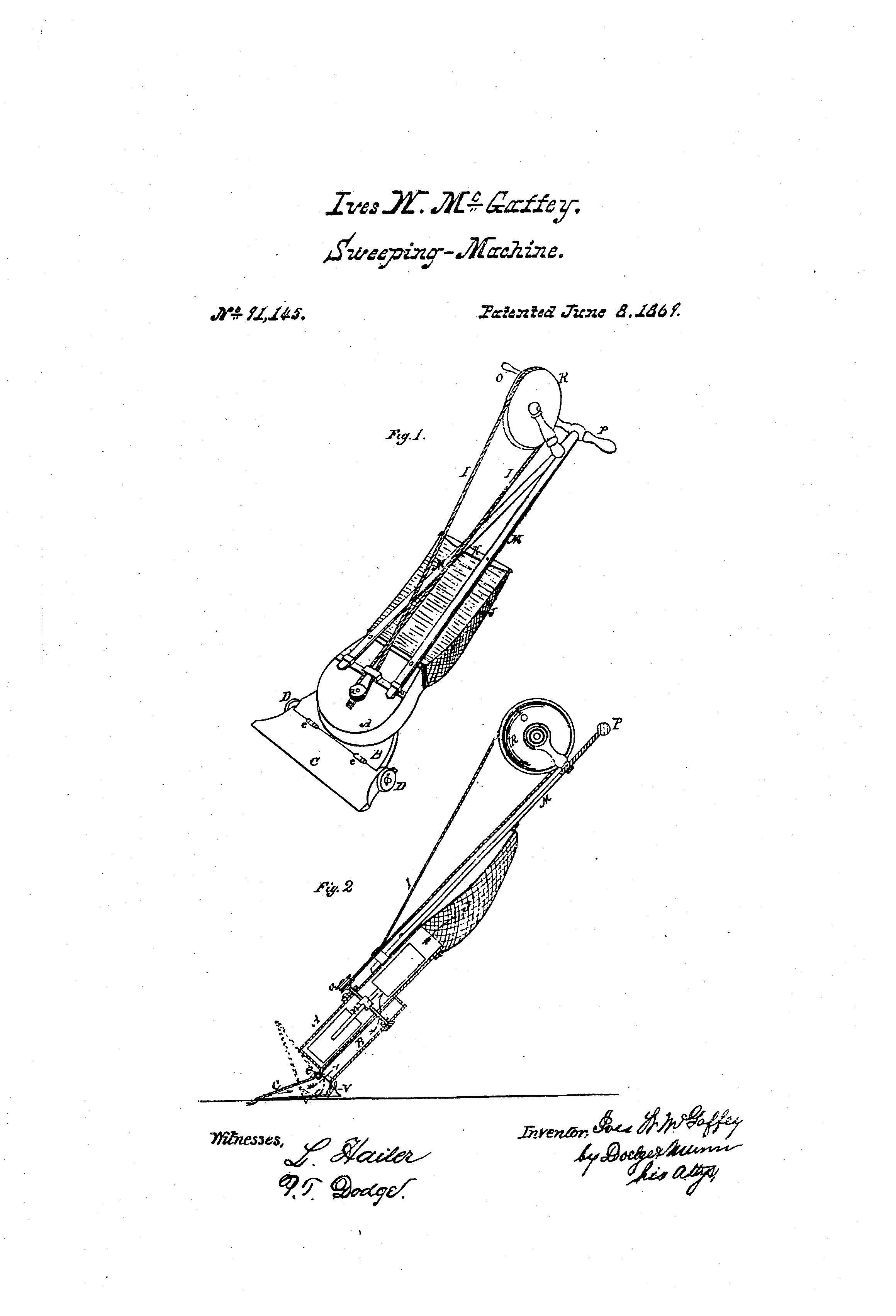Suiter Swantz IP takes a look back at past inventions and inventors with our Patent of the Day.
On this day in 1869, Ives W. McGaffey was granted U.S. Patent No. 91,145 for an IMPROVED SWEEPING-MACHINE.
Before vacuum cleaners existed, people would take their carpets outside to beat the dirt out of them. In 1797, the broom was perfected in Massachusetts, and not long after people sought a better, less tedious, and more technologically advanced way to clean. In the 1850s, carpet sweepers that used a manual system of pulleys and cranks that rotated a brush or sweeping apparatus to push dirt into a receptacle were invented.
Chicago inventor Ives McGaffey patented the first device for cleaning rugs. He called his machine “Whirlwind”. His vacuum was difficult to use because the operator had to manually turn a crank while pushing it across the floor. McGaffey’s invention was not a motorized or electric vacuum cleaner, but it is known as the first hand-pumped vacuum cleaner in the United States. McGaffey is credited by many historians for the invention of the vacuum due to the hand-operated crank to produce power and the machine standing upright, resembling modern vacuum cleaners.
The accumulation of dust and dirt in dwelling-houses is a source of great annoyance to all good housekeepers, a large portion of the dust being so light that the ordinary process of sweeping sends it flying into the air, so that it is difficult to control or expel it from the room. The use of a broom or brush on carpets is objectionable, for it wears off the lint and fiber in fine particles, and creates a cloudy dust, while the heavier particles are brushed down into the carpet.
To obviate these difficulties is the object of McGaffey’s invention, the nature of which consists in the employment of a strong current of air, produced by mechanism, and so controlled as to take up the dust and dirt, and carry the fine particles into a porous air-chamber, so constructed as to allow the air to escape, while the dust is retained.
Vacuums have significantly advanced since McGaffey’s invention. In 1901, Huber Cecil Booth patented the first motorized vacuum cleaner. His invention did not achieve much success as it required a horse-drawn carriage for transport. Many inventors introduced variations of Booth’s vacuum with a cleaning-by-suction contraption. In 1907, James Spangler used a broom, a pillowcase, and an electric motor to revolutionize the vacuum into a model similar to what we use today. William Hoover, a leather goods manufacturer, purchased the patent from Spangler, made improvements, and turned his invention into a business that is still successful today.
Suiter Swantz IP is a full-service intellectual property law firm serving all of Nebraska, Iowa and South Dakota. If you have any intellectual property questions or need assistance with any patent, trademark or copyright matters and would like to speak to one of our patent attorneys please feel free to contact us.
